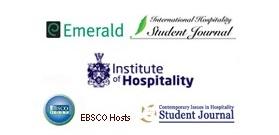
What is Plagiarism?
According to Gibaldi (2003) Plagiarism originates from the Latin word plagiarises meaning “kidnapper”. It is also considered as academic theft and is a growing concern in academia as the number of students engaging in plagiarism is growing and the internet presents as a facilitator in this. However, students do not always plagiarise deliberately, therefore it is important to highlight what is considered as plagiarism and ways in which to prevent it. Plagiarism must be prevented at all levels of academic life.
What is Considered as Plagiarism?
Plagiarism is when you use someone else’s work and pass it off as your own.
Using other people’s work without acknowledging the source of your information. As a researcher, you must give credit whenever you write about another person’s idea/theory or opinion.
This can include copying photographs, pictures, diagrams, any tables, percentages, statistics, graphs or drawings without acknowledging your sources.
Copying word-for-word from a source or of another person’s spoken or written words
Copy and paste from a source and not referencing accordingly
Failing to put direct quotation in quotation marks
Resubmitting a piece of work you have done for another subject
Purchasing essays/papers online instead of doing the work yourself.
Copying from another student’s work or borrowing a paper/essay from a student who has previously undertaken the same course
Asking someone to write a paper for you
Paraphrasing words of a text very closely
How to Avoid Plagiarism
Referencing
Referencing is a way of indicating where evidence, ideas, theories, facts, or any other information was found. You must reference in text, and at the end of your paper, whenever you use:
books, journals, lecture notes & presentations, the Internet, television, radio, DVDs, etc. There are different forms of referencing in text (direct quotes, paraphrasing, author citation) and depending on the type of source used they also take a different form of referencing
Affiliated with Queen Margaret University (Edinburgh) ,therefore we follow their guide to Harvard Referencing, which is found at the link below:
Queen Margaret University Guide to Harvard Referencing
Reasons for Referencing
Avoids Plagiarism.
To demonstrate the amount you have read/researched and the variety of different sources.
By having evidence to support the point you are making, this creates stronger arguments.
If the reader is interested in what you are presenting, they are able to conduct further research by retrieving the source that you have referenced.
Paraphrasing and Plagiarism
The main difficulties students come across when paraphrasing is that they often articulate other people’s views adapting them in their words. Therefore, the result is too close to the original text and the student is guilty of plagiarising, even if a reference has been provided. Genuine paraphrasing occurs only when the source has been acknowledged and the researcher has discussed, explained and argued the sources main ideas, viewpoints, opinions or facts in their own words without changing the original meaning.
Satisfactory paraphrasing transpires when:
The original text is re-written in different words.
Paraphrasing does not govern a writer’s work.
The paraphrase is made to allow the author to interact critically with another person’s views.
It is referenced accordingly
Useful link
For Apple Mac owners, a widget is available to generate correct Harvard referencing:
Reference
Gibaldi, J. 2003. MLA Handbook for Writers of Research Papers. 6th ed. New York: The Modern Language Association of America.

